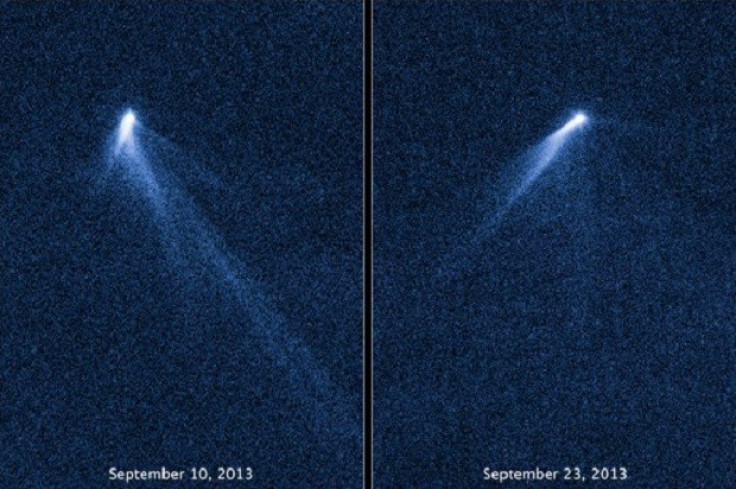Asteroid with Six Tails 'Completely Knocked Out' Nasa Scientists
P/2013 P5 was born 200 million years ago but has only just been captured by Pan-Starrs and Hubble Telescope

An asteroid that has six tails has been captured on camera by scientists.
Named P/2013 P5, the lump of extraterrestrial rock has "dumbfounded" experts .
Images show multiple streams of dusts spewing from it as it careers through space. Shots captured two weeks apart revealed just how much its tails alter over the course of a few days.
David Jewitt of the University of California at Los Angeles is leading investigations into P/2013 P5. He said: "We were dumbfounded when we saw it. Even more amazing, its tail structures change dramatically in just 13 days as it belches out dust.
"That also caught us by surprise. It's hard to believe we're looking at an asteroid. We were completely knocked out."
Jewitt predicted that it would be the first of many such unusual finds by scientists.
"In astronomy, where you find one, you eventually find a whole bunch more. This is just an amazing object to us and almost certainly the first of many more to come," he said.
P/2013 P5 first came to the attention of astronomers via the Pan-Starrs Observatory in Mexico. They were so puzzled by what they saw that they turned around the Hubble Telescope in space to get a closer look.
The six tails were believed to have been caused by the asteroid's rapid spin which caused the rock to break up and send dust flying off in all directions. Astronomers said that P/2013 P5 was a fragment of a larger asteroid that broke up 200 million years ago.
© Copyright IBTimes 2024. All rights reserved.






